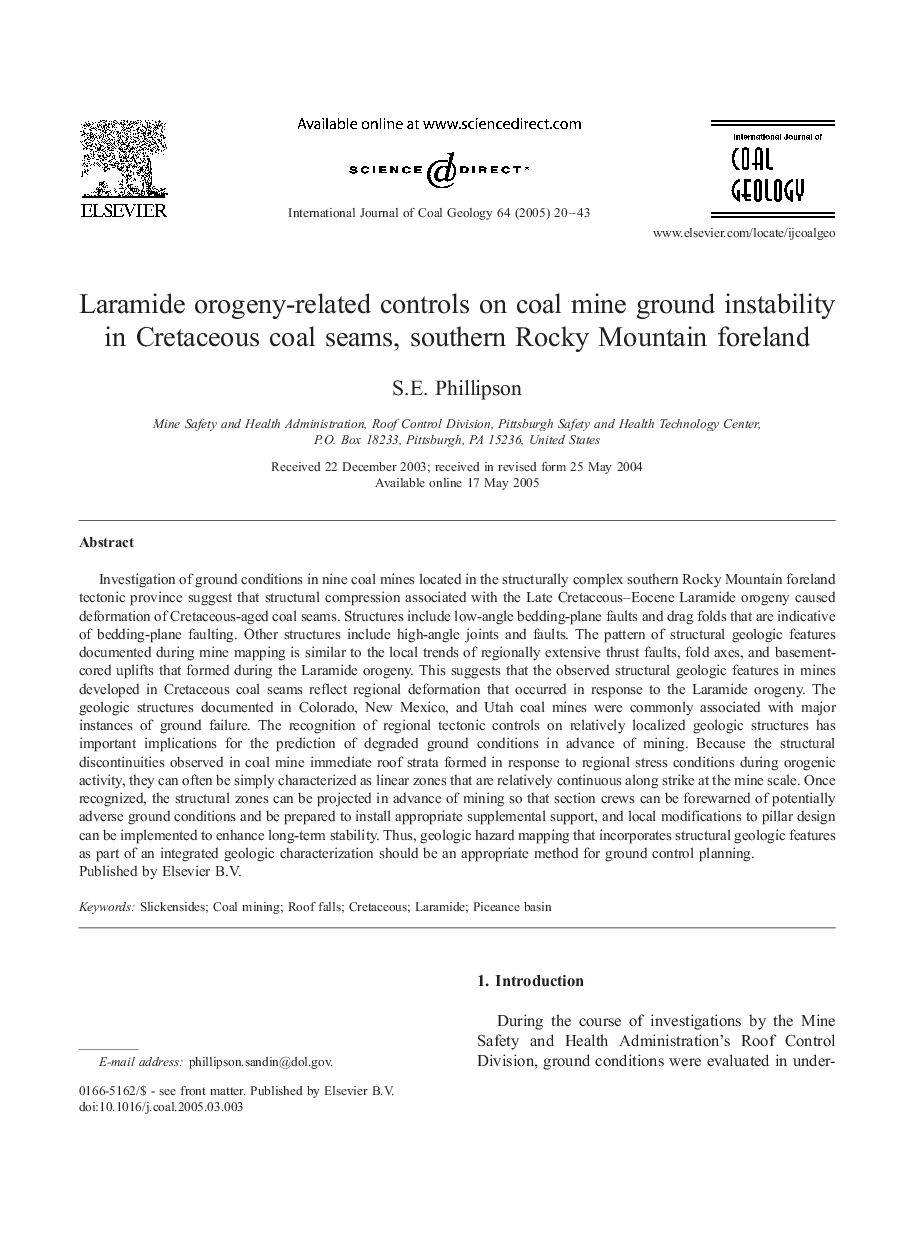| کد مقاله | کد نشریه | سال انتشار | مقاله انگلیسی | نسخه تمام متن |
|---|---|---|---|---|
| 9826111 | 1522675 | 2005 | 24 صفحه PDF | دانلود رایگان |
عنوان انگلیسی مقاله ISI
Laramide orogeny-related controls on coal mine ground instability in Cretaceous coal seams, southern Rocky Mountain foreland
دانلود مقاله + سفارش ترجمه
دانلود مقاله ISI انگلیسی
رایگان برای ایرانیان
کلمات کلیدی
موضوعات مرتبط
مهندسی و علوم پایه
علوم زمین و سیارات
زمین شناسی اقتصادی
پیش نمایش صفحه اول مقاله

چکیده انگلیسی
Investigation of ground conditions in nine coal mines located in the structurally complex southern Rocky Mountain foreland tectonic province suggest that structural compression associated with the Late Cretaceous-Eocene Laramide orogeny caused deformation of Cretaceous-aged coal seams. Structures include low-angle bedding-plane faults and drag folds that are indicative of bedding-plane faulting. Other structures include high-angle joints and faults. The pattern of structural geologic features documented during mine mapping is similar to the local trends of regionally extensive thrust faults, fold axes, and basement-cored uplifts that formed during the Laramide orogeny. This suggests that the observed structural geologic features in mines developed in Cretaceous coal seams reflect regional deformation that occurred in response to the Laramide orogeny. The geologic structures documented in Colorado, New Mexico, and Utah coal mines were commonly associated with major instances of ground failure. The recognition of regional tectonic controls on relatively localized geologic structures has important implications for the prediction of degraded ground conditions in advance of mining. Because the structural discontinuities observed in coal mine immediate roof strata formed in response to regional stress conditions during orogenic activity, they can often be simply characterized as linear zones that are relatively continuous along strike at the mine scale. Once recognized, the structural zones can be projected in advance of mining so that section crews can be forewarned of potentially adverse ground conditions and be prepared to install appropriate supplemental support, and local modifications to pillar design can be implemented to enhance long-term stability. Thus, geologic hazard mapping that incorporates structural geologic features as part of an integrated geologic characterization should be an appropriate method for ground control planning.
ناشر
Database: Elsevier - ScienceDirect (ساینس دایرکت)
Journal: International Journal of Coal Geology - Volume 64, Issues 1â2, 17 October 2005, Pages 20-43
Journal: International Journal of Coal Geology - Volume 64, Issues 1â2, 17 October 2005, Pages 20-43
نویسندگان
S.E. Phillipson,